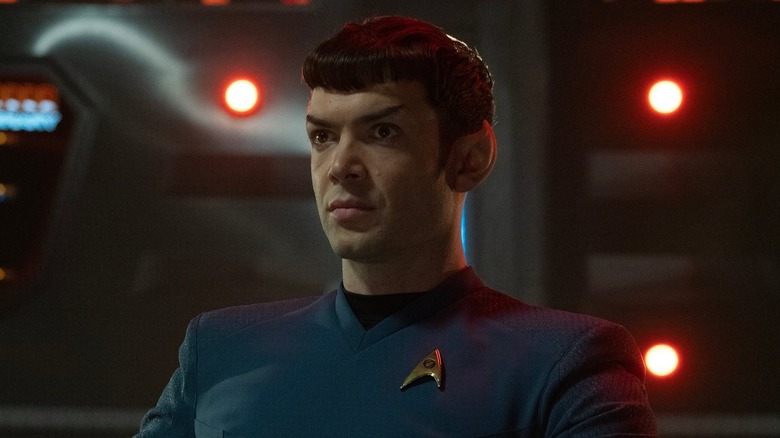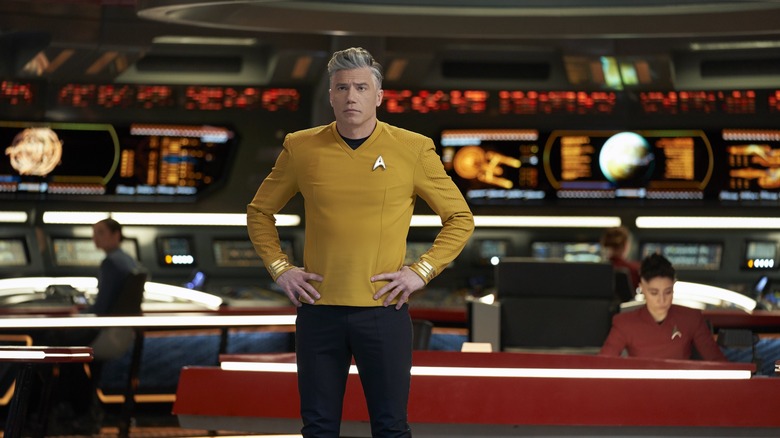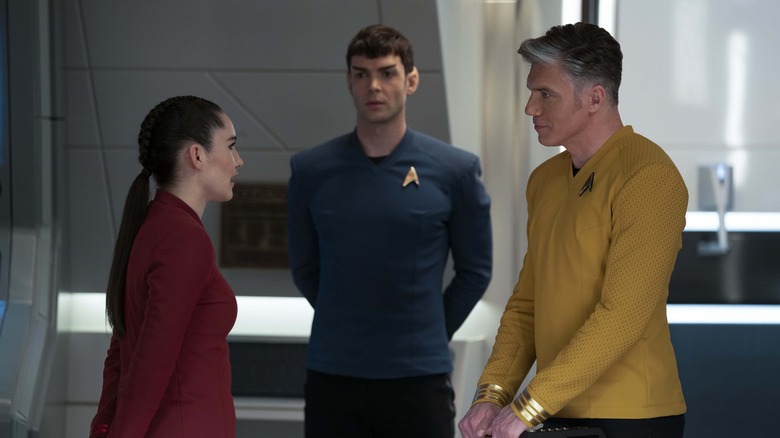Star Trek: Strange New Worlds Season 2 Review: Space Exploration Has Never Been So Much Fun
- Wonderful use of classic characters
- Playful storytelling that doesn't take itself too seriously
- Doesn't seem to know what to do with the characters Una and Pelia
After ceding pop culture relevance to Marvel films and "Star Wars" for ages, "Star Trek" seems to be quietly entering a bit of a golden age. With several shows capitalizing on nostalgia for beloved characters, it has thoroughly shaken off any lethargic dust, back and better than ever. And of all the "Star Trek" shows currently on the air (the franchise, like "Star Wars," is clearly not afraid of saturating the market), "Strange New Worlds" is quickly establishing itself as the most fun by far. It returns for a second season with an energetic determination to make the most of its iconic characters, throwing them into endlessly entertaining situations without getting bogged down by a larger narrative arc.
When we last left the Starship Enterprise, Captain Christopher Pike (Anson Mount) had just embarked on a massive time travel mission. On "Star Trek Discovery," he witnessed his own death in the future and is now contemplating an attempt to change the course of events that would lead to this fate. Which, predictably, turns out to be a mistake, catapulting him into an alternate version of the future where he is still alive, but the Federation is on the brink of war with the Romulans. (Also, a certain James T. Kirk, played by Paul Wesley, is in command of the Enterprise.) Pike makes the difficult decision to accept his fate, thus ensuring the survival of the Federation. But just when we think all is well, the episode ends with the shocking arrest of Commander Una Chin-Riley (Rebecca Romijn) for hiding her status as a genetically modified Illyrian in order to join Starfleet.
Standalone adventures vs. multi-episode arcs
Season 2 of "Star Trek: Strange New Worlds" picks up this thread, but it's surprisingly resistant to engaging with many multi-episode arcs. Now that Season 1 did the dirty work of establishing the members of the Enterprise as a team (not too tall an order, considering that many of the characters have been around in the consciousness of "Star Trek" fans since the 1960s), the show is free to have them go on more one-off adventures. And over the course of the season, the writers clearly relish that freedom, bearing no allegiance to the type of long-form storytelling that the show's companion series "Star Trek: Discovery" relies upon. It takes on faith the fact that we know these characters backward and forwards by now, and uses the opportunity to get a little bit silly with their individual episodes.
There are plenty of dramatic scenes (after all, this is still "Star Trek") but "Strange New Worlds" has a lightness of touch that's refreshing in a sci-fi landscape that too often seems to think the only way to be taken seriously is to take itself far too seriously. Unexpectedly for a science-fiction show, the best parts of "Strange New Worlds" are not necessarily when they're infiltrating alien planets or having face-offs with the Klingons, but the more intimate, character-driven moments aboard the Enterprise, where we watch the crew become a family. That's always been a huge part of the appeal of "Star Trek" since the very beginning, and "Strange New Worlds" captures this element of the franchise perfectly.
The evolution of the characters
The stars of "Strange New Worlds" hit the ground running in the first season, but here they're really allowed space to develop. Ironically — and perhaps, ahem, illogically — Ethan Peck as Spock is the beating heart of the show, and it's no coincidence that he gets the lion's share of the emotionally focused interpersonal material, as he struggles to balance the two halves of his identity. "Strange New Worlds" continues to integrate Paul Wesley as James T. Kirk into the show to great effect, giving him brief appearances that allow him to shine but never let his charm offensive throw off the delicate ecosystem of the Enterprise team. Characters like La'an Noonien-Singh (Christina Chong), Nyota Uhura (Celia Rose Gooding), and Erica Ortegas (Melissa Navia) fully come into their own, bolstered by strong performances from their respective actors.
By contrast, Una Chin-Riley and new addition Pelia (played by Carol Kane) feel somewhat aimless. Aside from an early season storyline exploring Una's persecuted background as a genetically modified Illyrian (which, tellingly, is much more focused on Yetide Badaki's commanding performance as Neera Ketoul, a civil rights attorney defending her in court), the show doesn't seem to know what to do with her. And Carol Kane, although always a delight, feels out of place on the Starship Enterprise -– she feels as though she's there more as a plot device than a character in her own right.
On the whole, Season 2 of "Strange New Worlds" expands upon the things that worked in the first season, while moving away from the doom and gloom that often defines "Star Trek: Discovery." More than anything else, the writers seem to be having tremendous fun, a joyfulness that audiences can't help but feel while watching their favorites end up in bizarre, almost fanfiction-like scenarios. The show is at its best when it takes its characters completely out of their comfort zone, using the tropes and contrivances of science fiction to overcome not just plot hurdles but their own innate natures. Does "Strange New Worlds" occasionally lean hard into fan service? Absolutely. But it's hard to mind when the fan service is executed to perfection.
The second season of "Star Trek: Strange New Worlds" premieres on Paramount+ on June 15.


